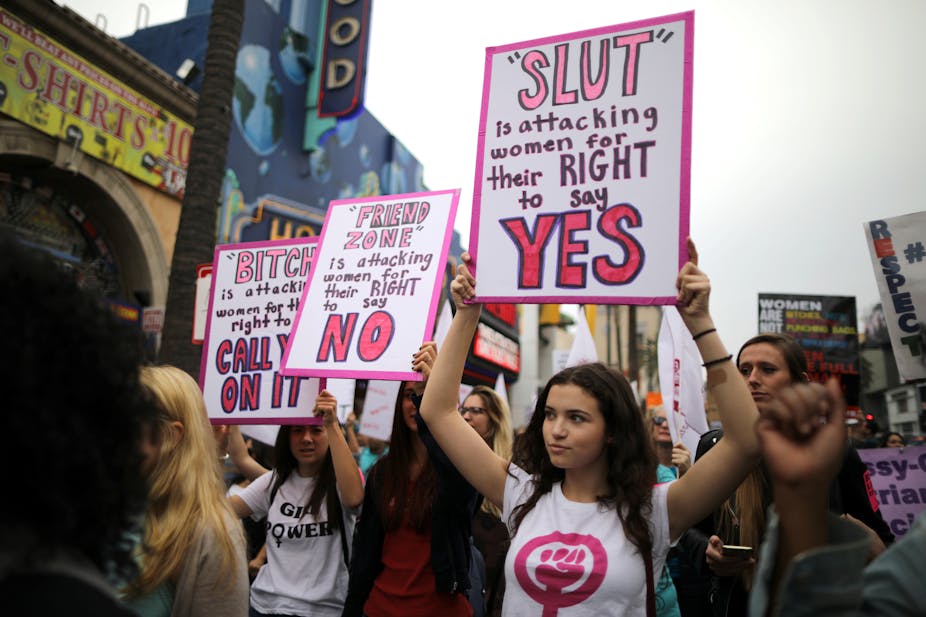If responses to Cat Person – the latest viral sensation dubbed “the short story for the #metoo age” – are anything to go by, it’s clear that people see abuse and violence differently.
Men and women can often disagree about what is considered violent behaviour and what is considered normal human interaction. And in this way, it sometimes tends to be the case that women who speak out about abuse are accused of exaggerating or seeking attention.
This can be particularly the case in the online world – where female users of social media platforms such as Twitter and Facebook can be threatened or harassed, with little or no consequence for the people who attack them.
But a lot of this may well come down to the fact that research shows that men and women differ in their perceptions of violence. In this way, men are much more likely to engage in violence than women – and these gender differences often start in childhood.
Childhood violence
Research on bullying behaviour has found that boys are more likely to bully and girls are more likely to defend bullied peers. Boys are more likely to think of bullying as a normal part of how children interact, while girls are more likely to identify bullying as inappropriate and unacceptable behaviour.
Research shows these views make male bullying victims especially vulnerable, since they do not feel they can ask for help, and their male friends are not expected to offer help. Male students are often pushed to accept bullying as “banter”, and not take it too seriously.
Maybe it’s not surprising then that being bullied can lead children to develop mental health problems. And on the flipside, research has also shown that bullies are more prone to engage in violent and self-destructive behaviour.
Toxic masculinity
The pressure put on males to bottle up their feelings and not show empathy for others has lots of consequences for boys and men – both short and long term. This includes pent-up frustration, depression, conduct disorders, isolation, problematic relationships and even violence.
On the other hand, although it has been argued that this culture of toxic masculinity has made the world less safe for women, females tend to have the protective factor of closer and more supportive friendships. This generally makes girls more comfortable sharing their experiences with bullying and more willing to help bullied friends.

Growing up in a world that demands boys show themselves as strong has a devastating impact on boys and men but also on women and girls too. And by making boys feel like it’s not okay for them to be vulnerable, we could potentially be making them violent.
Both boys and men alike need to know that it’s alright to show their emotions, to ask for help, and to help others. In this way, young boys need to be taught that they cannot treat others violently. And equally that they should not accept being treated violently themselves – end the silence, end the violence.
By addressing the different messages girls and boys are fed on violence and caring behaviours, it could help to have positive effects on anti-bullying interventions, gender equality efforts, and male mental health. But more than that, it could also help to ensure the next generation of men and women feel comfortable talking about their feelings and understand the true impact violence and bullying behaviour can have.

